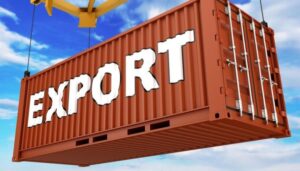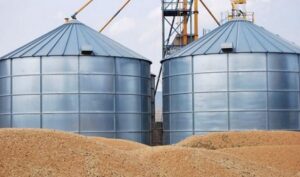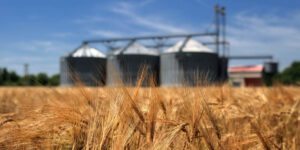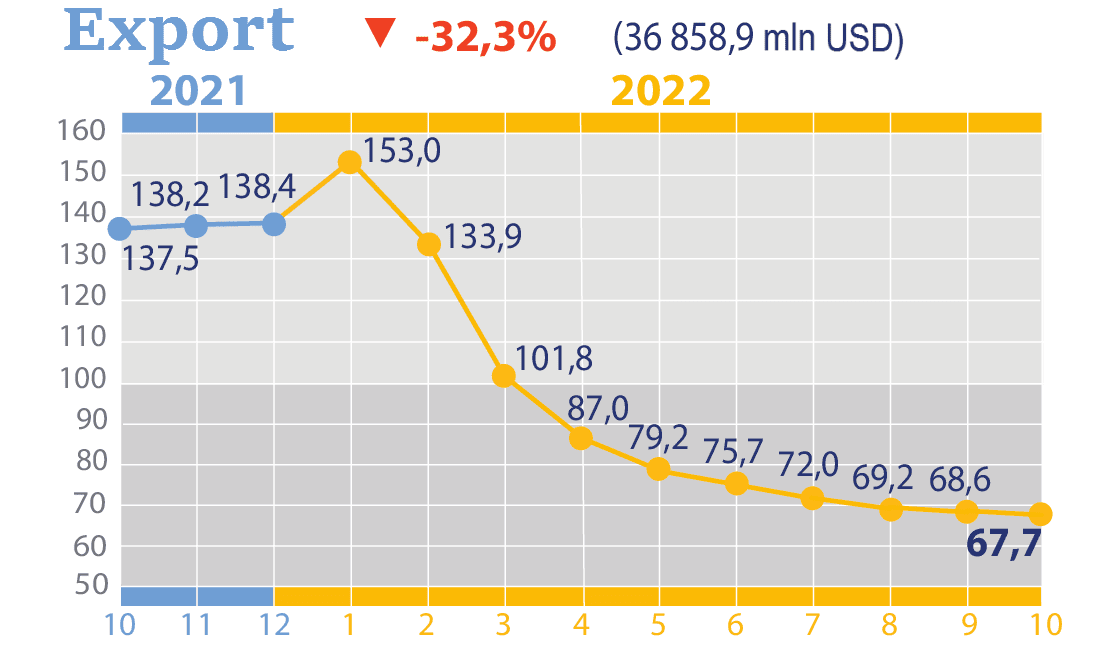Export of Ukraine by countries in Jan-Nov 2022

Source: Open4Business.com.ua and experts.news

Source: Open4Business.com.ua and experts.news

Ukraine exported 9.1 million tons of goods in February 2023 compared to 7.89 million tons in January, in monetary terms it rose to $3.32 billion from $3.1 billion, wrote Deputy Minister of Economy – Trade Representative of Ukraine Taras Kachka in Facebook.
“But less than the peak military September (9.6 million tons) and, of course, still a long way to 12.8 million tons in February 2022 … Since September there is a trend of slow decline in the value of exports: 4.1 – 3.8 – 3.8 – 3.48 – 3.1 – 3.32 billion dollars. The reasons are clear – the slowdown of the grain corridor and the price correction on the world market,” he added.
He said the value of imports in February was $5.03 billion.
“However, this is good news, because imports in war conditions is the reliability of supply of everything we need: fuel, pharmacy, generators and everything we need to endure. It is also fertilizers for the sowing season,” noted Kachka, without specifying the data for January.
He recalled that in general 2022 set a clear strategy in trade: to ensure security of supply in imports, restore logistics capabilities for exports and reduce the trade deficit through services.
The Ukrainian trade representative pointed out that last year merchandise exports totaled $44.1 billion and imports $55.2 billion, services exports $9.1 billion and imports $3.0 billion.
Kachka specified that the top ten most exported goods in February 2023 in descending order of value formed corn (code 1005) – $699.3 million, sunflower oil (1512) – $419.3 million, wheat (1001) – $322, 9 million, soybeans (1201) – $128.69 million, iron ore (2601) – $125.5 million, insulated wires (8544) – $82.9 million, sunflower meal (2306) – $75.4 million, pig iron (7201) – $65.03 million, poultry (0207) – $58.76 million and sunflower seeds (1206) – $58.69 million.
In the second ten, seamless pipes (7304) – $56.88 million, barley (1003) – $43.9 million, semi-finished iron products (7207) – $36.1 million, sugar (1701) – $34.1 million, ferroalloys (7202) – $33, 6 million, furniture (9403) – $32.38 million, rapeseed (1205) – $32.37 million, lumber (4407) – $31.4 million, soybean meal (2304) – $28.9 million and seating furniture (9401) – $24.9 million.
Finally in the third top ten are electric water heaters (8516) – $24.3 million, soybean oil (1507) – $24.1 million, plywood (4408) – $19.9 million, drugs (3004) – $19.1 million, hot rolled steel (7208) – $16.04 million joinery products (4418) – $15.8 million, juices (2009) – $15.5 million, confectionery, bakery products (1905) – $13.7 million, crates and boxes (4415) – $13.1 million and confectionery sugar products (1704) – $12.9 million.

The U.S. Agency for International Development (USAID) announced collaboration with three major Ukrainian agricultural holdings to develop their grain export and storage infrastructure for a total project investment of $44 million.
According to CNN’s website, the three companies are large Ukrainian agricultural producers Kernel, Nibulon and Grain Alliance.
It is specified that the cooperation with the companies will help increase Ukraine’s capacity to ship over 3 million tons of grain to foreign markets per year. Investments will be used to develop the infrastructure of agricultural products storage and expansion of elevators.
“This announcement is part of a deliberate effort by the Biden administration to develop Ukraine’s economy and mitigate the global food security crisis that escalated after Russia’s invasion of Ukraine,” the publication specified in the report.
As earlier reported, before the war Kernel was the world’s number one producer and exporter of sunflower oil (about 7% of world production) and was the largest producer and seller of bottled sunflower oil in Ukraine. The company was also engaged in cultivation and sale of other agricultural products.
In FY2022 (July-2021 – June-2022), the holding posted a net loss of $41 mln versus $506 mln net profit in the previous FY. Its revenue decreased by 5% to $5.332 bln, and EBITDA decreased by 3.7 times to $220 mln.
Nibulon, one of the largest grain market operators in Ukraine, on April 15, 2022 received the permit from Izmail city council (Odessa region) for the construction of the terminal for handling grain cargoes on the land plot with the total area of 20 hectares.
“Nibulon” was established in 1991. Before Russian military invasion grain trader had 27 transshipment terminals and complexes to receive the crops, the capacities for one-time storage of 2,25 mln. tons of agroindustrial complex products, fleet of 83 vessels (including 23 tugs), and also owned Nikolaev shipyard.
“Nibulon” before the war worked 82 thousand hectares of land in 12 regions of Ukraine and exported agricultural products to more than 70 countries.
The grain trader exported maximum 5.64 million tons of agricultural products in 2021, reaching record volumes of deliveries to foreign markets in August – 0.7 million tons, the fourth quarter – 1.88 million tons and in the second half of the year – 3.71 million tons.
Grain Alliance Agro Holding in spring 2022 purchased a grain logistics hub near the border of Ukraine and Slovakia to deliver agricultural products by land bypassing Ukrainian ports, the throughput capacity of which was significantly reduced due to the full-scale Russian military invasion. The transshipment capacity of the grain terminal in Černá nad Tysou (Slovakia) will be up to 400,000 tons per year.
Before the war, Grain Alliance farmed 57,000 hectares in Kyiv, Poltava, Chernigov and Cherkassy regions, grew more than 300,000 tons of grains and oilseeds a year, and owned more than a thousand head of cattle.
Agroholding has six granaries in Ukraine with a total capacity of over 260 thousand tons.
The founders of Harvest Moon East LLC (Baryshevka village, Kyiv region) and BZK Grain Alliance (Sweden) established a joint company, Grain Alliance, in 2009.

Ukraine since the beginning of 2022/2023 marketing year (MY, July-June) and until February 27 has exported 31.78 million tons of grain crops, including 18.2 million tons of corn (57.2% of total supplies), 11.24 million tons of wheat (35.6%) and 2.05 million tons of barley (6.4%).
As reported on the website of the Ministry of Agrarian Policy and Food on Monday, the rate of grain exports since the beginning of this MY is by 26.9% lower than during the same period of the previous MY, when 43.52 million tons were shipped abroad on that date. Thus, on February 27, there was achieved the minimum for the season lag of export volumes from the indicators of the previous season. For comparison, the previous smallest gap from last year’s figures at the rate of “minus” 28.65% was recorded on February 13.
According to the Ministry, Ukraine has exported 18.2 million tons of corn (-5.8% compared to the same period last year), 11.24 million tons of wheat (1.61 times less), 2.05 million tons of barley (2.75 times less), 15.8 thousand tons of rye (10.2 times less) and 97.7 tons of flour (+43.7%) since the beginning of 2022/2023 MY and until February 27 this year.
It is specified that Ukraine exported 4.7 million tons of grain since early February, including 2.94 million tons of corn, 1.51 million tons of wheat, 229 tons of barley, 15,300 tons of flour and 3 tons of rye.
As it follows from the Ministry data, during the week of February 20-27, an average of 192.9 thousand tons of grain was supplied to foreign markets per day, while during the preceding period of February 13-20 – 165.7 thousand tons/day, February 3-13 – 170.7 thousand tons/day, January 27 – February 3 – 209.4 thousand tons/day, January 20-27 – 121.1 thousand tons/day, January 9-20 – 140 thousand tons/day and January 2-9 – 121.7 thousand tons/day. Thus, the average daily rate of exports during the reporting period February 20-27 has increased by 16.4% compared to the previous period February 13-20.
As reported, Ukraine in 2021/2022 MY exported 48.51 million tons of grain and leguminous crops, which is 8.4% higher than in the previous MY, despite the full-scale invasion of Russia and the difficulties with the export of agricultural products due to the blockade of Ukrainian seaports. 18.74 million tons of wheat (12.6% more than in 2020/2021MY), 23.54 million tons of corn (+1.9%), 5.75 million tons of barley (+35.9%), 70.9 thousand tons of flour (-44.1%) were supplied to foreign markets.
Ukraine in 2020/2021 MY exported 44.72 million tons of grain and leguminous crops: 16.64 million tons of wheat, 23.08 million tons of corn, 4.23 million tons of barley, 126.9 thousand tons of flour and 18.4 thousand tons of rye.
In 2019/2020, Ukraine exported 56.72 million tons of grain and leguminous crops.
Export changes in % to previous period in 2021-2022

Source: Open4business.com.ua and experts.news